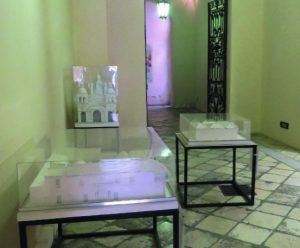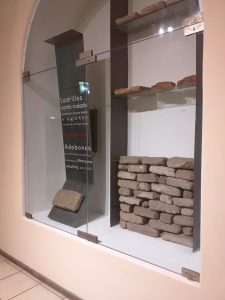[Audioguide]
The architectural models we observe in this exhibition were produced by students and teachers of the School of Architecture, Urbanism and Design of this University. They represent the time in which our University started.
Industrial Designer Fabricio Lozano, tells us about the production process of these models in the following video:
8 – A. Architectural Models

[Audioguide]
Throughout most of the colonial period, Córdoba was a small town on the outskirts of the Gobernación del Tucumán, in the Viceroyalty of Peru. Córdoba’s economic activities were linked to transportation and commercial exchange with other regions due to its strategic location.
Córdoba’s urban landscape was built by remarkable religious and secular buildings, and several are still standing. This exhibition inspires us to walk around the city’s historical centre and visit the actual buildings in person.
8 – B. Cathedral Church
8 – C. Allende family house
8 – D. Marquess of Sobremonte’s house
8 – E. Discalced Carmelites Saint Joseph’s Monastery
8 – F. To build spaces is to create systems

[Audioguide]
This exhibition underlines the importance of the Jesuit Block as an educational, religious and political centre within the system the Society of Jesus created up to 1767 (when they were expelled from the Kingdom of Spain and its colonies). It also presents an architectural model of the Jesuit buildings, along with the materials that were used in its construction.
